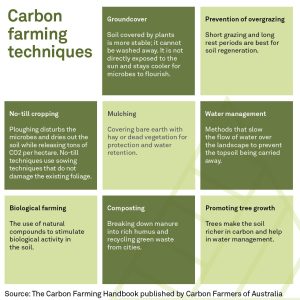What Are Carbon Credit Exchanges For Farmers?
What Are Carbon Credit Exchanges
Carbon markets are an emerging global solution to the challenge of climate change. These markets allow companies to offset their emissions by selling carbon credits generated through reducing, capturing or avoiding greenhouse gases (GHGs).
A growing number of carbon credit exchange farmers and ranchers are taking part in the carbon market. They’re implementing a variety of agricultural practices to reduce their emissions and earn an income. Essentially, carbon farming is an alternative agriculture approach that reduces emissions by sequestering and storing atmospheric carbon in soil. This approach has the potential to significantly reduce the amount of CO2 emitted by farmers and help combat global warming.

The most important part of the process is measurement, reporting and verification (MRV). This requires a lot of data gathering. MRV systems such as the eAgronom Carbon Programme make this easier for farmers and provide the confidence that their farm’s carbon farming changes are generating real carbon savings.
What Are Carbon Credit Exchanges For Farmers?
Soil is the most efficient absorbent of carbon, absorbing about 90% of the atmospheric carbon it captures, according to a study conducted at Michigan State University. That means that farmers who adopt regenerative practices, like no-till and cover cropping, can effectively sequester carbon in their soils.
But, even farmers with the best intentions may have trouble implementing regenerative farming strategies because of a lack of understanding of the process and the necessary tools to do so. As a result, there’s a need for support that’s aimed at helping farmers navigate the process and maximize their returns.
For example, the eAgronom Carbon Programme provides farmers with a MRV system so they can track the effects of their regenerative practices on their acreage and get paid for their carbon credits. The program also offers prepayments to farmers, which helps them manage their outcomes and profits early in the program.
Carbon credits are generated through soil and crop management practices that reduce emissions, such as no-till farming, reduced fertilizer use, and cover crops. The credits are measured and verified based on farmers’ adherence to the carbon protocol.
They are then sold on a carbon market to corporations or individuals looking to reach sustainability goals. The value of these credits can vary based on the price set by the carbon market and the quantity of sequestered carbon. The prices of these credits are volatile, but generally range between $10-90 per ton. Often, farmers can expect to see $15-$20 per ton, depending on the specifics of their agricultural practices and the amount of carbon they sequester.
It’s a good idea for farmers to choose the carbon program that is best suited to their needs. Finding a carbon program that has a strong reputation in the industry and offers guidance during the MRV phase is key to getting the most out of the experience.
The carbon market for agriculture is still a relatively new concept, and the industry is in need of help. Fortunately, many of the industry’s leading organizations are committed to supporting and strengthening the carbon market for farmers in the United States and around the world. AEM members are among the most knowledgeable and trustworthy resources available to assist farmers in navigating this rapidly evolving field.